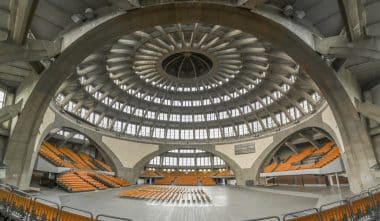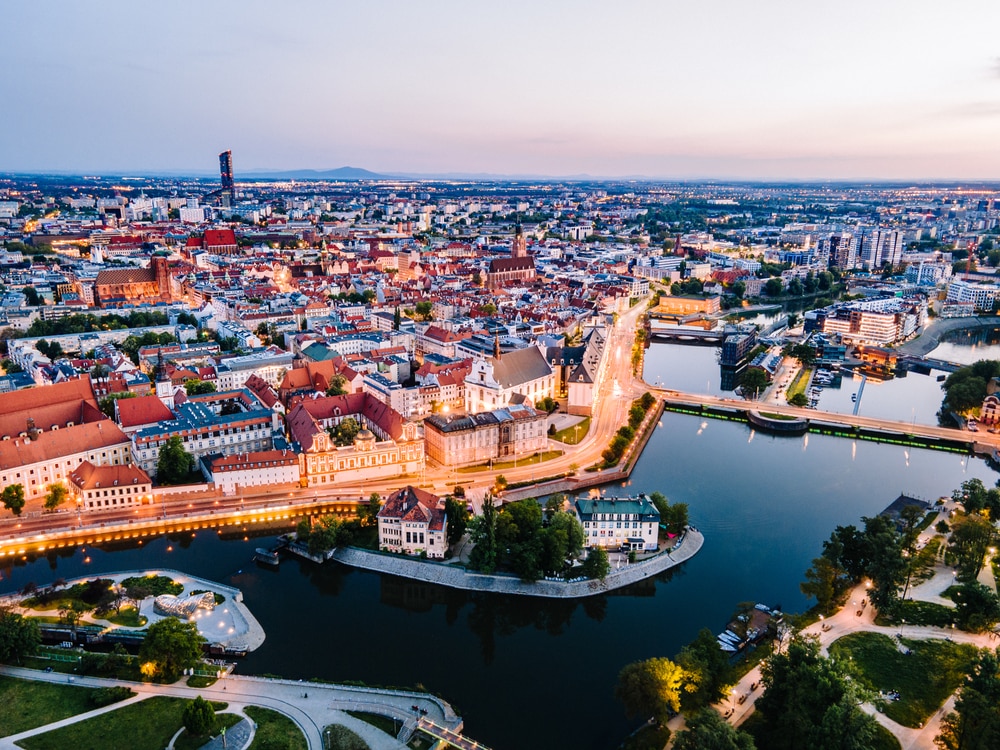The Polish city of Wroclaw is not only architecturally beautiful and culturally interesting, but also the ideal destination for a city trip. From Germany, the Silesian metropolis, which has just under 650,000 inhabitants, can be easily reached in just a few hours. It is located in the southwest of Poland, directly on the Oder River and is only 175 kilometers from the German city of Görlitz. In 2016, Wrocław, which is called Wrocław in the national language, was the European Capital of Culture.
This brought Wroclaw a little more into the focus of foreign tourists. Nevertheless, the city, especially compared to the Polish cities of Warsaw, Krakow and Gdansk, is not yet overrun by tourists. So if you want to experience cultural highlights, such as the Wroclaw City Palace and the Wroclaw Cathedral Island, as well as culinary delicacies in Silesian tradition, and traces of the city’s German heritage, Wroclaw is the right place for you. In the historic old town, all the sights are so close to each other that they can be easily reached on foot.
How to get to Wroclaw
Wroclaw has good bus and train connections, as well as a small airport, which can be reached by public transport from the city center in about 20 minutes. Nicolaus Copernicus Airport is served by flights from several cities in Germany . These include, for example, Düsseldorf, Munich and Frankfurt am Main. Direct long-distance buses and trains also depart from several cities in Germany. And Wroclaw is also well connected to the international transport network via the A4 motorway.
An exciting walk through Wroclaw’s Old Town

If you are in Wroclaw for the first time, it is best to start your sightseeing tour in the Stare Miasto, i.e. the old town. As in many Polish cities, all paths are concentrated on the centrally located market square, which is always called Rynek in the Polish language. There you can see the landmark of Wroclaw, the Gothic-style town hall. A very special sight is the astronomical clock from 1580 attached to the town hall.
Since the town hall has been rebuilt and expanded several times over the centuries, there are not only Gothic elements on its façade and interior, but also those from other eras, for example from the Renaissance. Otherwise, the Rynek is lined with brightly painted historic town houses. Today, these box-shaped buildings are home to many small shops, cafés and restaurants. If you wish, you can go to the outdoor area of one of these restaurants located in the middle of the Rynek, enjoy the view of the surrounding architectural beauties and the specialties of Old Polish and Silesian cuisine. For example, the Polish national dish pierogi, dumplings filled with meat, cabbage, potatoes, spinach or mushrooms with sour cream and fried onions, or Silesian dumplings with meat, cabbage and sauce, taste good here.
Furthermore, the old town is teeming with churches, all of which are worth a visit. The St. Corpus Christi Church, the Jesuit Church, the Municipal Parish Church of St. Mary Magdalene and the Dorotheenkirche are particularly nicely decorated with art objects. In addition to the Rynek, the salt market is surrounded by stately villas, where the richest and noblest citizens of the city of Wrocław used to reside. The facades of these buildings are still worth an extensive look today.
The Sand Island and the Cathedral Island
The city’s islands are located a few meters away from the old town area, but can still be easily reached on foot after a short walk. First, coming from the old town, you will come across the sand island, which you will enter after crossing the sand bridge. In the middle of a dividing arm of the Oder there are several islands, all of which boast magnificent buildings and artistically designed statues and monuments. The best thing to do here is to just walk around and let yourself drift from one architectural beauty to the next. A highlight is the Wroclaw Cathedral, which was built between 1244 and 1341 in the Gothic style. The façade is surmounted by two towers, each with a height of 98 metres, visible from afar. In the Second World War, 70 percent of the cathedral was destroyed by the Red Army, but has since been completely rebuilt. In addition to other church buildings, the city’s botanical garden also attracts tourists on the Oder Islands. In the midst of 700 different plant species, exhausted cultural travellers can gather new strength here.
The most interesting museums in Wrocław

Wroclaw has numerous top-class museums. If you want to visit them all, you will certainly need longer than just a few days. If you don’t have that much time, you should definitely start with a visit to the Wroclaw City Palace. The historic building, which dates back to 1750, houses the city museum. Here visitors learn everything about the eventful history of the city of Wroclaw. It is also worth visiting the National Museum, which is mainly dedicated to the presentation of the fine arts.
The focus of the exhibition is on Silesian, Polish and Ukrainian art from the Middle Ages to the present day. There are paintings, drawings, sculptures and also photographs to visit. On the Cathedral Island, the Museum of the Diocese exhibits magnificent church treasures. Wroclaw is also home to the Polish National Museum of Architecture. On the grounds of the Botanical Garden, plant lovers can gain insights into the local Polish flora in the Natural History Museum. Smaller special-interest museums, which are no less interesting, are the Theatre Museum, the Museum of Post and Telecommunications and the Pharmacy Museum Wrocław.


